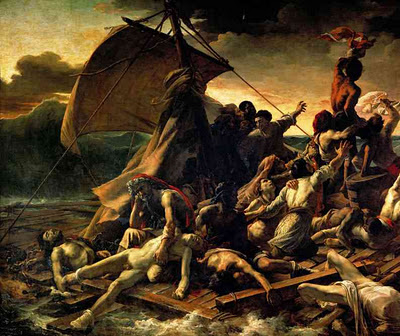2. the path the viewer's eye follows through the image
1. the sensation of objects moving within an image can be alluded to through the use of various visual elements
-curves can give a sense of motion as these lines are not tied to the vertical and horizontal structure of the picture plane
 |
| Vincent Van Gogh |
 |
| Hexagonall |
 |
| Sonia Delauney |
 |
| Theodore Gericault |
 |
| Wassily Kandinsky |
-repetition and rotation of a form within an image will also create a sense of movement, as our eye will infer the action of the form turning in space
 |
| Marcel Duchamp |
 |
| Vodaphone Headquarters, Portugal |
2. The viewer's eye can be purposefully moved throughout a composition to maintain a sense of visual harmony, as well as direct us to a focal point within the image
-directional lines (actual and implied lines, and gazes) can direct the viewer's eye to a focal point within a composition, communicating what is most important in a design
 |
| Mary Cassatt |
...or keep the eye moving around the composition, maintaining a sense of visual equilibrium (see the discussion in Balance)
 |
| James Whistler |




No comments:
Post a Comment